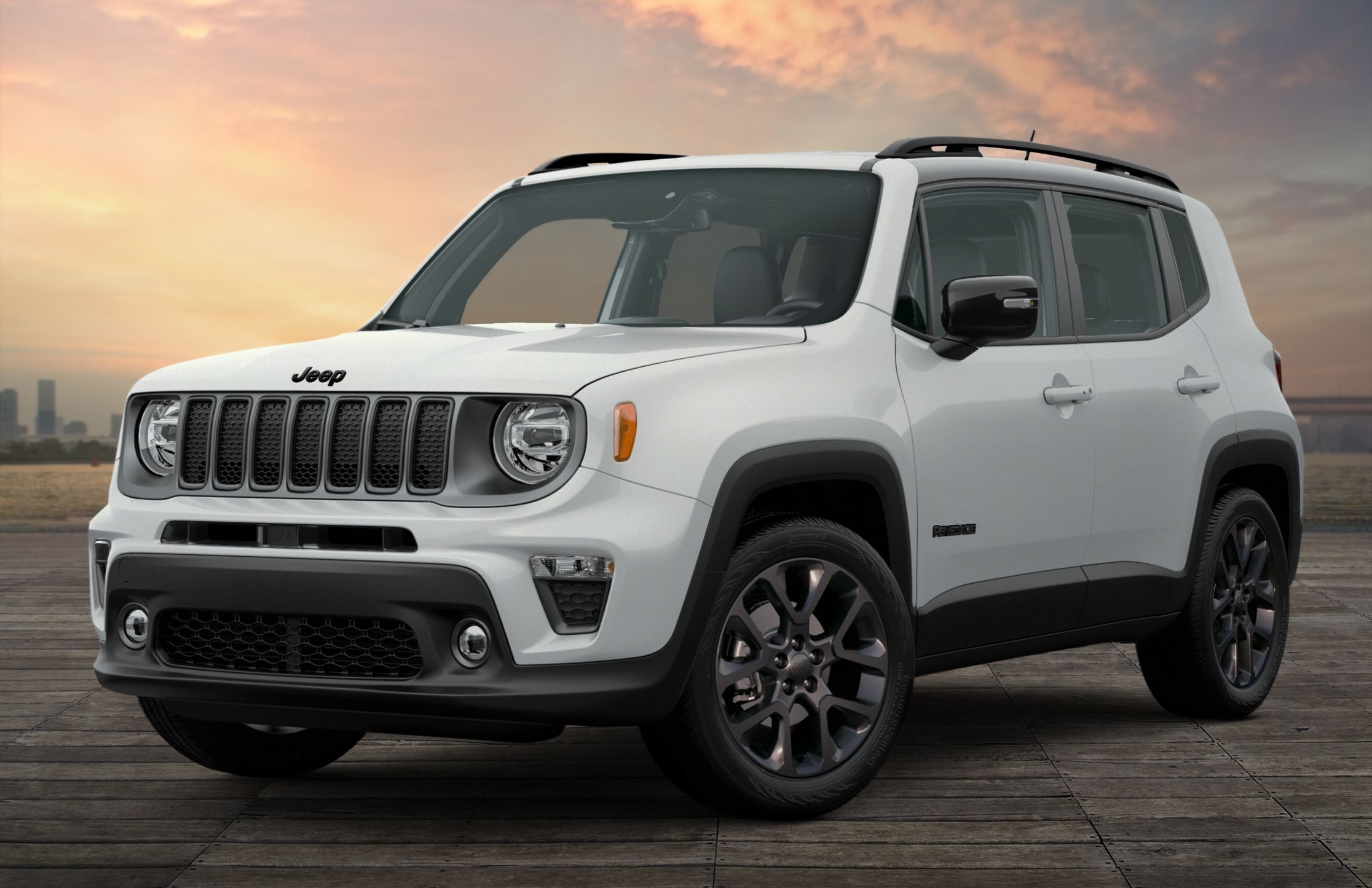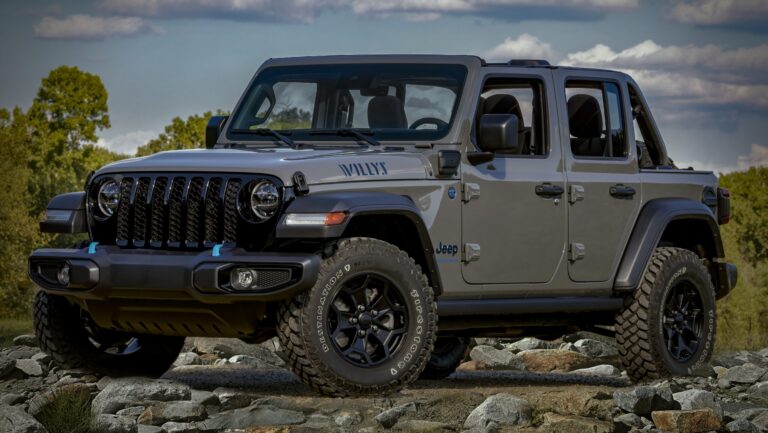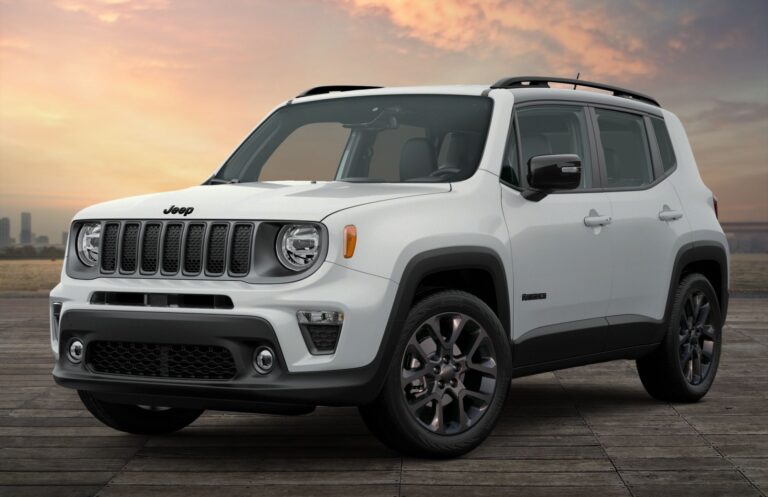Jeep GPW For Sale: A Comprehensive Guide to Owning a Piece of History
Jeep GPW For Sale: A Comprehensive Guide to Owning a Piece of History jeeps.truckstrend.com
The iconic silhouette of the Jeep – rugged, utilitarian, and instantly recognizable – is inextricably linked to the triumphs of the Second World War. While many associate the name "Jeep" solely with Willys-Overland, a significant portion of these wartime workhorses were, in fact, built by the Ford Motor Company. These vehicles, known as the Ford GPW, stand today as formidable historical artifacts, embodying American ingenuity and resilience. For enthusiasts, collectors, and history buffs, the prospect of finding a "Jeep GPW For Sale" isn’t just about acquiring a vehicle; it’s about owning a tangible piece of military heritage, a machine that played a pivotal role in shaping the modern world.
This comprehensive guide is designed to navigate the exciting, yet often complex, journey of acquiring a Ford GPW. From understanding its historical significance to inspecting a potential purchase, assessing its value, and maintaining it for future generations, we’ll delve into every aspect of bringing one of these legendary vehicles into your life.
Jeep GPW For Sale: A Comprehensive Guide to Owning a Piece of History
I. A Legacy Forged in War: Understanding the Jeep GPW
To truly appreciate a Ford GPW, one must first understand its origins. In 1940, with war looming, the U.S. military issued a specification for a lightweight, four-wheel-drive reconnaissance vehicle. Willys-Overland, Ford, and American Bantam all submitted prototypes. While Willys’ design (the Quad, evolving into the MB) ultimately won the initial production contract, the sheer demand for these vehicles soon necessitated additional manufacturing capacity. Ford was brought in to produce its version, the GPW, which was nearly identical to the Willys MB due to standardized government blueprints.
The "GP" in GPW often leads to speculation, with some believing it stands for "General Purpose." However, Ford’s internal nomenclature indicates "G" for government contract, and "P" for its 80-inch wheelbase reconnaissance car. The "W" was added to denote the Willys-Overland engine design that Ford was licensed to use.
Distinguishing a Ford GPW from a Willys MB can be a fascinating detective hunt. While visually very similar, GPWs typically feature the iconic "Ford script" stamped on the rear panel (though often painted over or removed during service), and most notably, an "F" script mark on countless components – from nuts and bolts to engine parts, body panels, and even small brackets. This "F" mark is the hallmark of a true Ford GPW and is a key indicator of its originality. These vehicles were produced in massive numbers, with over 277,000 GPWs rolling off Ford’s assembly lines, serving on every front of the war.
II. Why Buy a Jeep GPW? The Allure of Authenticity and History
The decision to seek a Jeep GPW For Sale goes beyond mere transportation. It’s an investment in history, a passion project, and an entry into a unique community.
- A Tangible Link to History: Owning a GPW is like owning a mobile museum exhibit. It’s a direct connection to the soldiers, battles, and pivotal moments of WWII.
- Collector’s Item and Investment: Well-preserved or expertly restored GPWs are highly sought after. Unlike many modern vehicles, their value tends to be stable or even appreciate over time, making them a relatively sound investment for enthusiasts.
- Unique Driving Experience: Driving a GPW is an exercise in raw, mechanical connection. Without power steering, modern suspension, or creature comforts, it offers an unfiltered, engaging experience unlike any contemporary vehicle. It’s a journey back in time with every mile.
- Participation in Events: GPW owners are often active in military vehicle clubs, reenactment groups, and historical parades. These events offer opportunities to share your passion, educate the public, and connect with fellow enthusiasts.
- Mechanical Simplicity: Compared to modern vehicles, the GPW is mechanically straightforward. Its simple design makes it an excellent platform for those who enjoy working on their own vehicles, offering a satisfying blend of challenge and reward.

III. Navigating the Market: Where to Find a Jeep GPW For Sale
Finding a Ford GPW requires patience, research, and knowing where to look. The market is specialized, but opportunities abound:
- Specialized Vintage Military Vehicle Dealers: These dealers often have a curated inventory of restored or project GPWs. They can provide expertise, provenance, and often offer warranties or support.
- Online Marketplaces & Auction Sites:
- eBay Motors: A wide range of conditions, from parts to fully restored vehicles. Requires careful due diligence.
- Hemmings Motor News: A classic car marketplace with a dedicated section for military vehicles.
- Bring a Trailer (BaT): Features high-quality, often well-documented vehicles, frequently reaching premium prices.
- Dedicated Forums and Classifieds: Websites like G503.com (the Military Vehicle Preservation Association forum) are invaluable resources. Members often list vehicles for sale, and the community can offer advice and insight.
- Military Vehicle Shows and Swap Meets: Events like the MVPA’s annual convention or regional military vehicle shows are excellent places to see vehicles in person, meet owners, and find GPWs for sale.
- Auctions: Classic car auctions (e.g., Mecum, Barrett-Jackson) occasionally feature military vehicles, though they tend to be high-end, fully restored examples.
- Word-of-Mouth & Private Sales: Networking within the vintage military vehicle community can lead to private sales not advertised elsewhere.
IV. What to Look For: Essential Inspection Points for a Prospective Buyer
When a "Jeep GPW For Sale" listing catches your eye, thorough inspection is paramount. GPWs exist in various states, from rusty barn finds to concours-quality restorations. Understanding the different conditions and what to scrutinize will save you time, money, and potential headaches.
Condition Categories:
- Project/Barn Find: Often incomplete, non-running, significant rust, possibly missing major components. Suited for experienced restorers or those with deep pockets for professional work.
- Running/Driving Survivor: Original condition, possibly rough cosmetically, but mechanically functional. Can be enjoyed as is with a "patina" look or serve as a solid base for a future restoration.
- Partially Restored: Some work completed (e.g., bodywork, engine rebuild) but still requires significant effort to finish. Assess the quality of completed work.
- Driver Quality Restoration: Looks good, runs well, but may have minor imperfections or non-original parts. Great for regular enjoyment.
- High-Quality/Concours Restoration: Meticulously restored to original specifications, often with NOS (New Old Stock) or period-correct parts. Show-ready and commands premium prices.
Key Areas to Inspect:
- Frame: The backbone of the vehicle. Check for rust, especially near suspension mounts and crossmembers. Look for bends, cracks, or evidence of significant accidents and poor repairs.
- Body:
- Rust: Common areas include floors (especially under seats and toolboxes), hat channels (underbody bracing), wheel wells, and the lower sections of fenders and the tailgate.
- Originality of Panels: Look for the "F" script on Ford GPW body panels (e.g., front grille, rear panel, toolboxes, fenders). Reproduction panels are common but reduce originality.
- Weld Quality: If restored, inspect welds for neatness and strength.
- Engine & Drivetrain (Go-Devil L-head 4-cylinder):
- Running Condition: Does it start easily? Does it smoke (blue = oil, black = rich fuel, white = coolant)? Listen for unusual noises (knocks, rattles).
- Leaks: Oil, coolant, transmission fluid, transfer case fluid.
- Oil Pressure: Check the gauge (or a mechanical gauge if possible). Low pressure indicates wear.
- Compression: A compression test can reveal engine health.
- Transmission & Transfer Case: Test all gears, including reverse and 4×4 engagement. Listen for grinding or difficulty shifting.
- Electrical System: Check all lights, gauges, horn, and wipers. Look for frayed wires or non-original modifications. The original 6-volt system is often converted to 12-volt for easier starting and modern accessories; assess the quality of the conversion.
- Suspension & Brakes:
- Leaf Springs: Check for broken leaves or sagging.
- Shocks: Look for leaks.
- Steering Linkage: Check for excessive play.
- Brakes: Test effectiveness. Inspect brake lines for rust or leaks, and drums for wear.
- Originality & Documentation:
- "F" Script Parts: As mentioned, a key identifier for GPWs. The more "F" marked parts, the higher the originality.
- Data Plates: Are they present and legible? Do the serial numbers match the title?
- Title/Registration: Crucial for legal ownership. Ensure it’s clear and transferable.
- Service/Restoration Records: Any documentation of past work adds value and provides insight.
- Provenance: Any history connecting the vehicle to a specific unit or service member adds significant value.
If you’re not an expert, consider hiring a specialist classic military vehicle mechanic or restorer to conduct a pre-purchase inspection. Their expertise can save you from costly mistakes.
V. Pricing Your Piece of History: A Comprehensive Guide to GPW Valuation
The price of a Jeep GPW For Sale can vary wildly based on its condition, originality, provenance, and the current market. Here’s a general guide:
Jeep GPW Price Table (Estimated Ranges – USD)
| Condition Category | Estimated Price Range (USD) | Notes |
|---|---|---|
| Project/Barn Find | $5,000 – $15,000 | Incomplete, non-running, significant rust, missing major components. Requires full, costly restoration. |
| Running/Driving Survivor | $15,000 – $30,000 | Mechanically functional but cosmetically rough; original patina. Needs significant work to be show-ready, but enjoyable as is. |
| Partially Restored | $25,000 – $40,000 | Some professional work completed (e.g., body, engine), but still requires substantial effort and investment to finish. |
| Driver Quality Restoration | $35,000 – $55,000 | Good appearance, runs reliably, suitable for regular driving and local shows. May have minor non-original parts or imperfections. |
| High-Quality/Concours Restoration | $55,000 – $80,000+ | Meticulously restored to historically accurate specifications using period-correct or NOS parts. Show-ready, museum quality. |
| Exceptional/Documented | $80,000 – $100,000+ | Outstanding originality, rare features, significant historical provenance (e.g., specific unit, famous owner, combat history). |
Disclaimer: These are approximate ranges and can fluctuate based on market demand, geographic location, specific vehicle features (e.g., early vs. late production), and completeness with period-correct accessories (e.g., tools, weapons mounts, radio equipment).
Factors that will increase value include:
- High percentage of original "F" marked parts.
- Matching numbers (engine, frame, data plates).
- Documented service history or provenance.
- Correct period accessories.
- High-quality, historically accurate restoration.
VI. The Restoration Journey: Bringing a GPW Back to Life
For many, buying a "Jeep GPW For Sale" is just the beginning of a rewarding restoration journey. This process can be a deeply immersive experience, teaching you about mechanics, history, and perseverance.
- DIY vs. Professional: Deciding whether to undertake the restoration yourself or hire professionals depends on your skill level, time, budget, and desired outcome. DIY allows for intimate knowledge of the vehicle and significant cost savings on labor, but requires tools, space, and patience. Professional restoration ensures quality and historical accuracy but comes at a significant cost.
- Sourcing Parts: The vintage military vehicle community is excellent for parts. You’ll find:
- NOS (New Old Stock): Original parts never used. Rare and expensive.
- Original Used Parts: Salvaged from other vehicles. Condition varies.
- Reproduction Parts: Newly manufactured parts. Quality varies widely; research reputable suppliers.
- Challenges: Restoring a GPW is not without its difficulties.
- Time & Cost: Restoration is a marathon, not a sprint. Budget generously for both time and money.
- Historical Accuracy: Recreating a vehicle exactly as it left the factory requires extensive research into paint schemes, markings, and component details.
- Finding Skilled Labor: Specialized mechanics and body shops familiar with vintage military vehicles can be hard to find.
- Benefits: The pride of bringing a piece of history back to life is immense. You’ll gain an unparalleled understanding of the vehicle and a deep satisfaction from the transformation.
VII. Owning and Maintaining Your GPW: Practical Advice
Once you’ve found and perhaps restored your GPW, ownership is a unique experience that requires specific considerations.
- Regular Maintenance: Like any vintage vehicle, GPWs require consistent attention.
- Fluid Checks: Oil, coolant, transmission, transfer case, differential fluids.
- Greasing: Many more grease points than modern vehicles.
- Tire Pressure: Often requires higher pressures than modern tires.
- Brakes: Manual drums require regular adjustment.
- Ignition System: Points, condenser, spark plugs.
- Driving Characteristics: Understand its limitations.
- Speed: Designed for off-road and convoy speeds, not highway cruising. Max speed is around 55 mph, but sustained highway driving is stressful on components.
- Braking: Manual drum brakes are adequate for its era but require more stopping distance and effort than modern systems.
- Comfort: Minimal suspension travel and basic seating mean a rough ride.
- Insurance: Standard auto insurance may not cover its true historical value. Seek specialized classic car insurance providers who understand collectible vehicles.
- Storage: Protect your investment from the elements. A dry, secure garage is ideal. Consider a battery tender if storing for extended periods.
- Join the Community: Becoming part of a local or national military vehicle club (like the MVPA) provides access to a wealth of knowledge, resources, and camaraderie.
Concluding Summary
The quest for a "Jeep GPW For Sale" is an exciting journey into the heart of automotive and military history. Owning one of these rugged, iconic vehicles is more than just a purchase; it’s an embrace of a legacy, a commitment to preservation, and an entry into a passionate community. By understanding its history, knowing what to look for during inspection, navigating the pricing landscape, and preparing for the joys and challenges of ownership, you can confidently acquire and cherish your very own piece of WWII history. The Ford GPW is not merely a vehicle; it is a testament to an era, a symbol of freedom, and a timeless machine that continues to inspire awe and respect decades after its creation.
Frequently Asked Questions (FAQ) about Jeep GPW For Sale
Q1: What is the main difference between a Willys MB and a Ford GPW?
A1: While functionally almost identical due to standardized blueprints, the key difference lies in manufacturing origin. Ford GPWs can often be identified by the "F" script stamped on numerous components (nuts, bolts, body parts, engine parts) and sometimes on the rear panel. Willys MBs have "W" script or no script on components.
Q2: Are parts still available for the Ford GPW?
A2: Yes, parts are readily available. A thriving aftermarket exists, offering both reproduction parts and original used/NOS (New Old Stock) components. Specialist suppliers and online forums are excellent resources.
Q3: Can I drive a GPW on modern roads?
A3: Yes, you can. However, GPWs are not designed for modern highway speeds. Their top speed is around 55 mph, and sustained driving at these speeds can be stressful on the engine and drivetrain. They lack modern amenities like power steering, power brakes, and comfortable suspension. They are best suited for parades, local drives, and off-road excursions.
Q4: How much does it typically cost to restore a GPW?
A4: Restoration costs vary widely depending on the starting condition and desired level of originality/quality. A full, professional, historically accurate restoration can easily cost anywhere from $30,000 to $70,000 or more, in addition to the vehicle’s purchase price. DIY restoration costs can be significantly less, primarily covering parts.
Q5: Is a Ford GPW a good investment?
A5: For well-preserved or expertly restored examples, the Ford GPW tends to hold its value well and can even appreciate over time. Like any collectible, its investment potential is tied to condition, originality, and market demand. It’s generally considered a stable investment within the classic military vehicle market.
Q6: What kind of fuel does a GPW use?
A6: The original GPW was designed to run on low-octane gasoline, typically 70-80 octane. Modern regular unleaded gasoline (87 octane) is perfectly suitable. Some owners add a lead substitute for older engines, though many run fine without it.
Q7: Where can I find an expert to inspect a GPW before buying?
A7: The best place to find an expert is through military vehicle clubs and forums, such as the Military Vehicle Preservation Association (MVPA) (g503.com). Members often have extensive knowledge and may be willing to assist or recommend local specialists. Classic car appraisal services may also have experts familiar with military vehicles.



